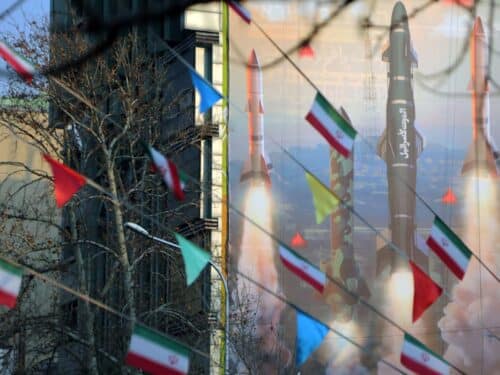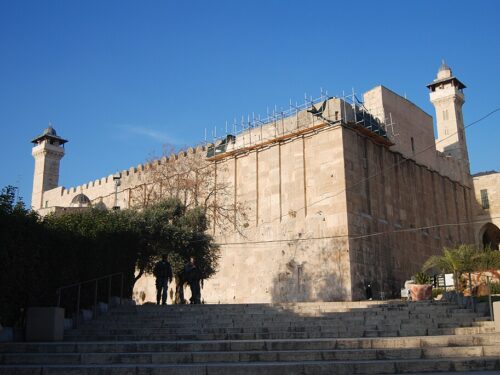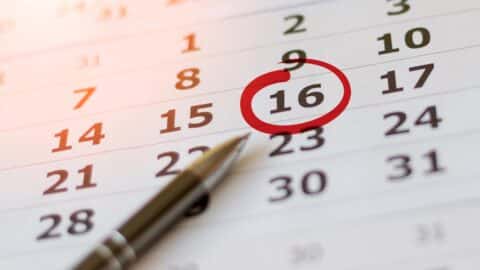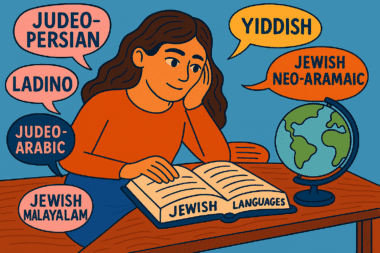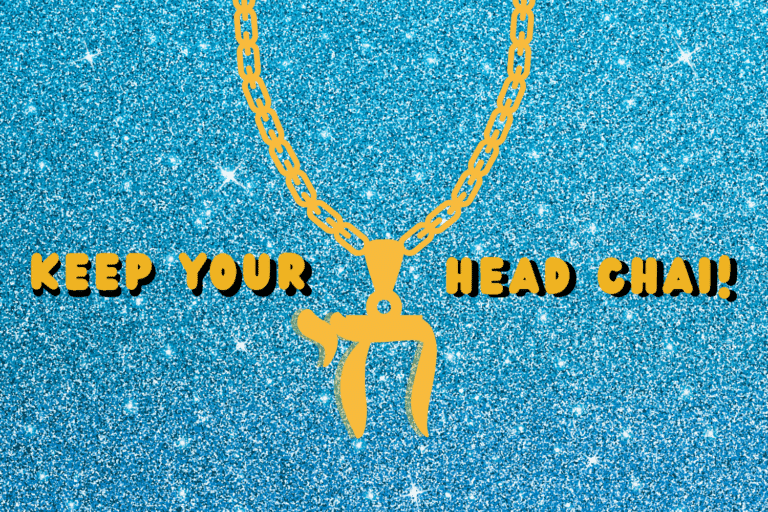
Have you noticed more Jews — especially Millennials and Gen Z — wearing Chai necklaces lately? And not the subtle, minimalist kind. These are big, gold, heavy, and unapologetic — not your bubbe’s Chai. Think: bold statement pieces, not background detail.
And it’s not just anecdotal, it’s backed by data. According to Bareket Fine Jewelry, sales of Judaica — particularly Chai necklaces — spiked 450 percent in the two months following Oct. 7, 2023, compared to the same period the year before.
So, what’s behind the resurgence? Why this symbol, and why now?
“The Magen David felt like it was identifying us, where the Chai felt like we are ALIVE,” says Paz Friedman, founder of Year of the Flood, the brand behind the now-iconic viral Chai necklace. “It was like our own little rebellion.”
@lizzysavetsky To the families shattered by this flood: We’re crying with you. We will never forget your angels.💔
♬ original sound – Lizzy Savetsky
She’s not wrong. For many young Jews, the Chai has evolved beyond a sacred motif, A declaration of resilience, identity, and pride.
But to understand its current power, we need to rewind a bit.
What does Chai mean?
In Hebrew, Chai (חי) means life. It’s made up of two letters: Chet (ח) and Yud (י), and together, a succinct expression of Judaism’s core value: the sanctity of life. You’ve seen it (or said it) in phrases like: Am Yisrael Chai — “The people of Israel live” or the “Fiddler on the Roof” classic, L’chaim! — “To life!”
A symbol with deep roots
The Chai has appeared in Jewish art and artifacts since at least the Middle Ages, etched into tombstones, illuminated in manuscripts, engraved into amulets and ritual objects. For centuries, it served as a visual shorthand for vitality, blessing, and spiritual continuity.
Chai in Jewish mysticism
In gematria (Jewish numerology), the letters Chet (eight) and Yud (ten) add up to 18, a number associated with luck, divine energy, and goodness because those letters spell out Chai. That’s why Jewish gifts and donations are often in multiples of 18 — $36, $180, etc. Symbolically, it’s not just a dollar amount. It’s life, times two, or more.
So yes, it’s just two letters. But they carry layers of mysticism, memory, and meaning.
From survival to sovereignty
After the Holocaust, Jewish symbols, like the Chai, took on new emotional weight. To wear one was no longer only spiritual; it was a quiet but defiant act of remembrance and survival.
With the founding of the State of Israel in 1948, those same symbols became tied to sovereignty, resilience, and national pride. The Chai became more than personal — it became political.

October 7, 2023: A turning point
In the aftermath of Hamas’s attacks on Israel and the global surge in antisemitism that followed, Jewish identity entered a new phase of visibility and vulnerability.
Many Jews asked, “How do I stay visible without feeling exposed?” and “How do I show up as a Jew in a world that suddenly feels more hostile?”
For many, purchasing and wearing Judaica felt like the answer.
“I think that more secular Jews in the diaspora often seek ways to connect to their Judaism that work for them. Even though putting on a pair of earrings or a necklace [might seem] frivolous, it can be a meaningful way to foster that connection,” Judaica artist Ariel Tidhar told Unpacked.
“I think everyone has been wearing some sort of religious sign on themselves since October,” Odd Pearls designer Noam Elazar agreed. Jews across Israel and the diaspora “are trying to figure out how to show their pride through all the hate and fear.”
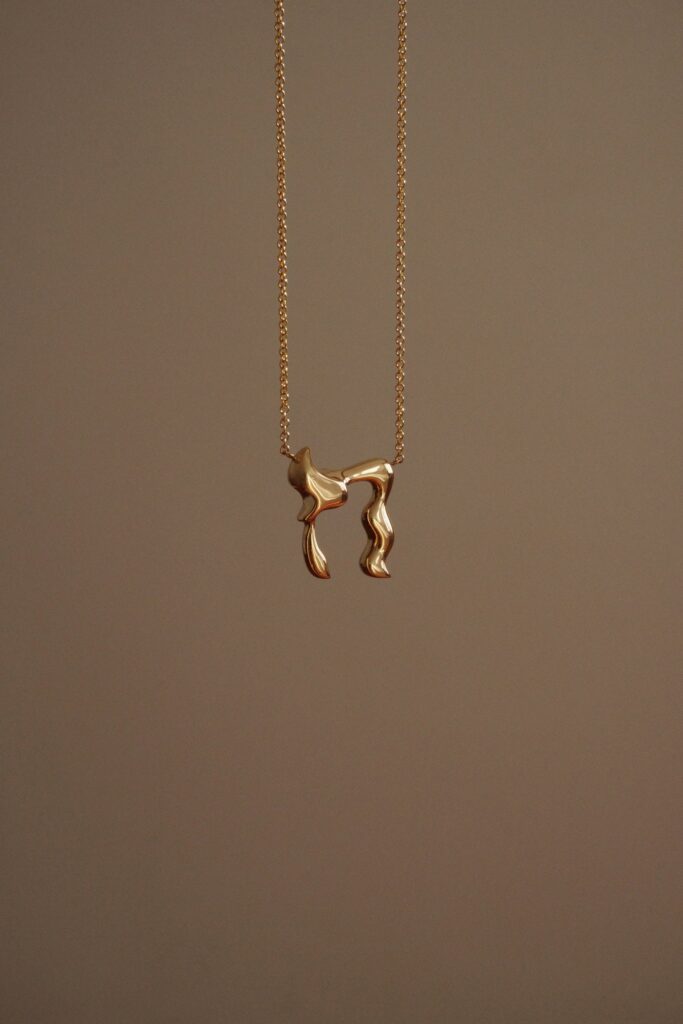
For some, the Magen David felt like merely an identifier. But the Chai? It felt like a response. Not a label. A declaration: We are alive. And we’re not going anywhere. Wearing a Chai became an act of resilience. A refusal to shrink. A way to say: We are mourning. We are fighting. We are living with intention.
For Australian sisters Rivi and Ricky New, the founders of jewelry line RREN, began designing Chai necklaces and Judaica after Oct. 7 when they felt the need to connect to their identity through their work.
“Did I think that I was going to be creating a brand that incorporated Judaica? Probably not. The truth is, when we were going to launch RREN, that wasn’t the plan. But October 7 shook us to our absolute core, putting into perspective what’s truly important to us,” Ricky told the Jewish Independent.
The Chai’s glow-up
Today’s Chai necklaces aren’t just meaningful — they’re fashionable statement pieces. Think high-polish gold, oversized silhouettes, Y2K-adjacent shine with spiritual gravitas. From Jewish TikTok to rallies, the symbol has been reimagined across communities and generations. It’s less of a trend, more of a transformation.
The Chai has evolved from a quiet symbol of faith into a bold assertion of Jewish presence,especially in times of fear, grief, and rising hate. It’s not just jewelry. It’s a declaration of continuity, of pride, and of choosing life, again and again.
Because life is sacred. And wearing that truth out loud? That’s powerful.

